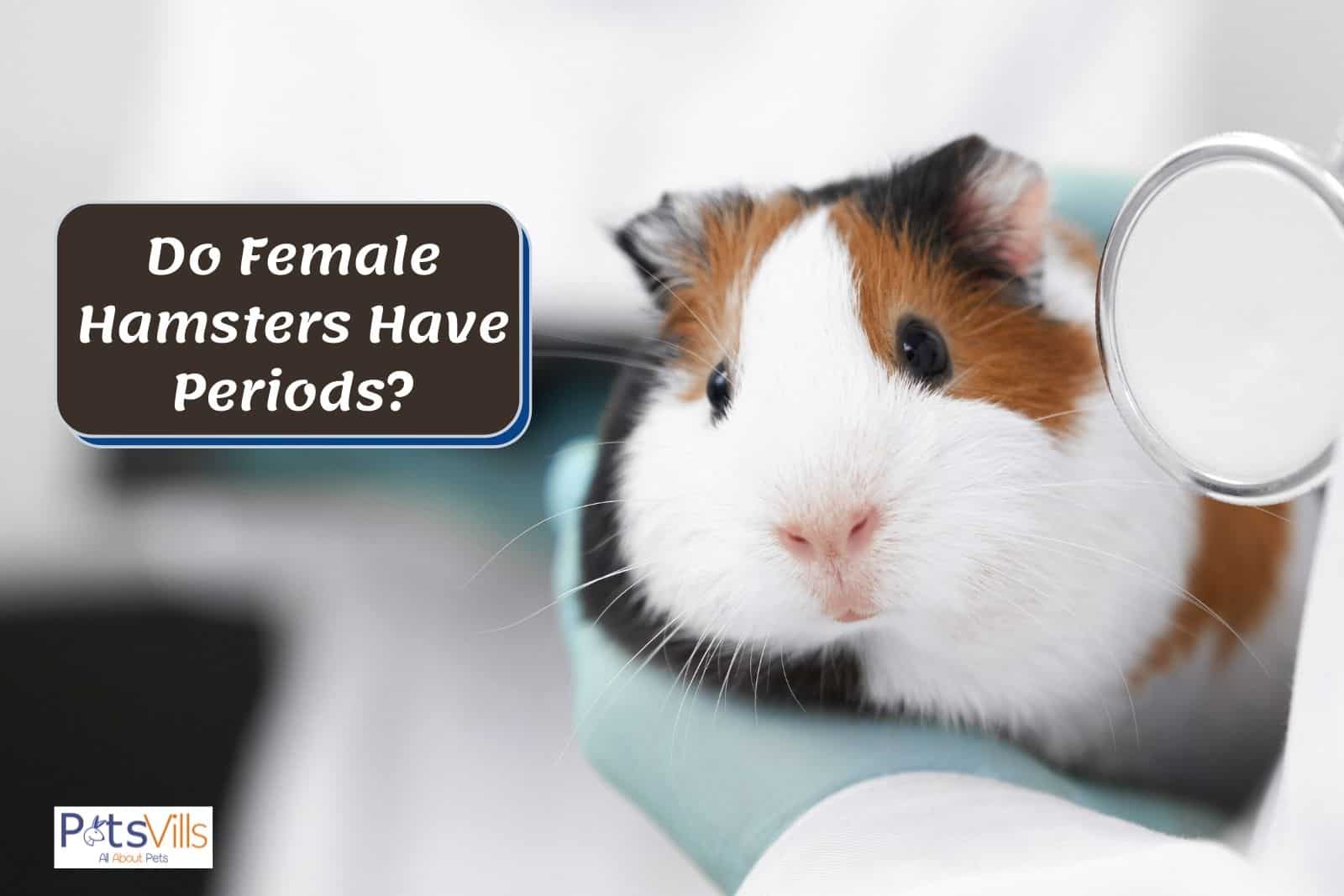As female humans get periods each month, it may have crossed your mind whether female hamsters get periods?
Do female hamsters have periods? Hamsters have an estrus cycle that is similar to a period. It happens every 4 days during the nighttime and lasts for 12 hours. An estrus cycle is also called ‘in heat’ and is where they produce a thick discharge.
Read on to find out more information about the estrus cycle and how it can affect your hamster.
Get Your Own Hamster Owner’s Handbook!
Table of Contents
Do Female Hamsters Get Periods?
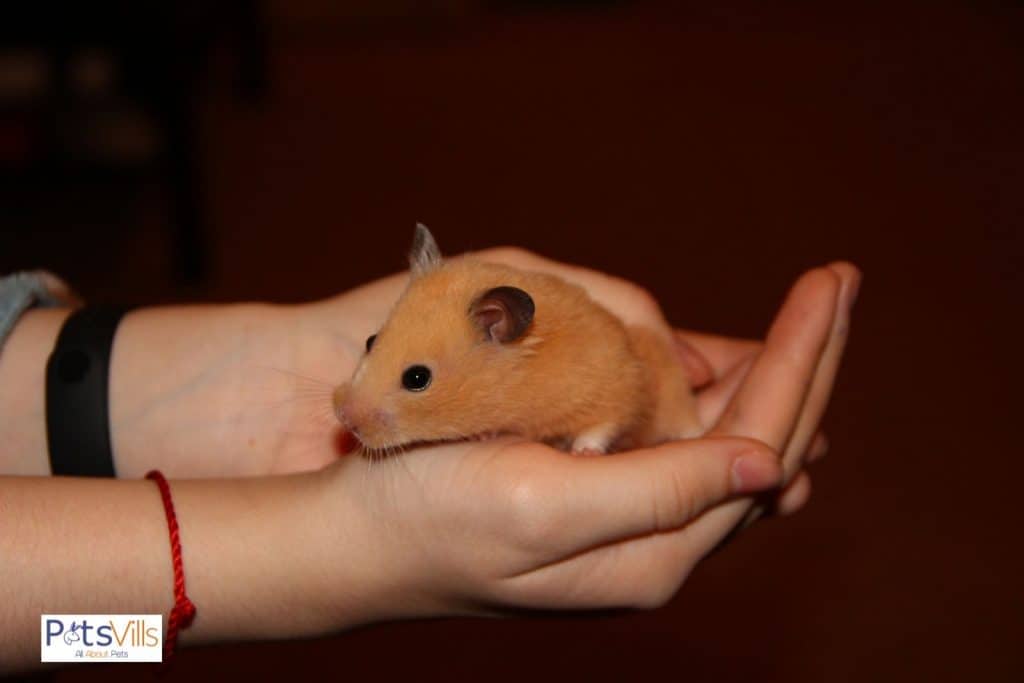
Hamsters don’t have periods like women do, but they do have an estrus cycle.
The estrus cycle is when hamsters ‘go into heat’. Only female hamsters have estrus cycles.
Other animals, such as dogs and cats, also have estrus cycles. However, their versions are much less frequent and last far longer than a hamster’s.
Dogs and cats typically come into season a couple of times a year for a few weeks. A female hamster is almost always in heat.
Hamsters have an estrus cycle every 4 days, and instead of bleeding or spotting, they produce a thick discharge.
Female hamsters can only become pregnant on the first day of their estrus cycle. Usually, after the first day, a female hamster is not receptive to a male hamster.
Fortunately for hamster breeders, female hamsters have such frequent estrus cycles. This means hardly any time is lost even if mating does go as planned.
READ MORE: Can Hamsters Drink From a Bowl?
What is the Estrus Cycle?
The estrus cycle occurs in female hamsters who are sexually mature. When a hamster starts their estrus cycle, it means they are ready to mate, similar to when a female dog or cat goes into heat.
When a female hamster is “in heat”, she will be willing to breed with males. At any other time, she would not be interested and most likely act aggressively towards a male hamster.
This is why hamster breeders track their female hamsters’ estrus cycle, so they know when to pair her with a male for mating.
Just like women who go through menopause and stop getting periods, older female hamsters will stop having an estrus cycle. This means they are too old to have offspring or get pregnant.
Check: How to Know if My Hamster is Dying
How Can You Tell Your Hamster is in Heat?
To know if your hamster is in heat, there are a few signs to look out for.
Smell
Female hamsters during estrus can smell a bit musky or pungent. If you notice your hamster smells a little more than usual, then she may be in heat.
Discharge
When a hamster is in heat, she will normally produce some mucus or discharge from her private area. This is usually quite thick, paste-like, and white in color. It is completely normal and nothing to be concerned about.
You might also notice your hamster’s private area is more swollen or red in color. This is also nothing to be worried about.
Behavior
Some female hamsters in heat can be a bit more irritable than usual. If your hamster is more fidgety or nipper than usual, then she might be in heat.
Alternatively, she may also be more active than normal. This is because she is looking for a mate (and doesn’t know she won’t find one in her cage!)
A good way to tell if your hamster is in heat is to stroke her lower, near her tail. She should freeze and stay very still, flatten out, and then lift her tail.
Female hamsters in heat display this type of behavior when you stroke near their tail because male hamsters normally engage in this activity before mating.
When a female hamster behaves like this, she is letting the male know she is ready to mate.
Take a look at this video:
How Long Does it Last?
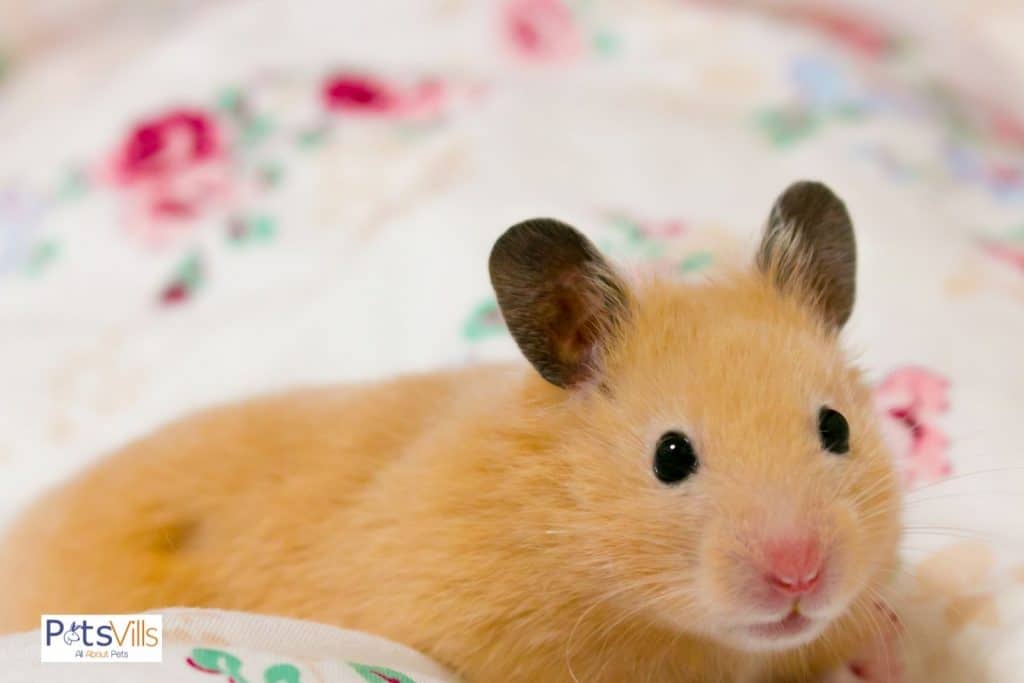
The estrus cycle lasts a few days, but ovulation only occurs on the first day for about 12 hours. If your hamster mates during her first day of estrus, then she is likely to get pregnant.
It usually begins during the night time as this is when your hamster will be the most active.
Female hamsters come “into heat” much more frequently than other animals, such as dogs and cats. They will have an estrus cycle around every 4 days.
During the second day of estrus, your hamster might have a thick white discharge coming from her private area. On the third day, this discharge can be waxier.
Your hamster will have an estrus cycle or ‘go into heat’ every four days.
READ MORE: How Long Can a Hamster be Left Alone?
How Bad Does It Smell?
A female hamster in heat can smell quite strong and musky. Additionally, her cage might smell more than usual.
This ‘musky’ odor can rub off on you when you handle your hamster, so make sure you wash your hands thoroughly afterward. You should always be washing your hands after you finished holding your hamster, anyway.
Although a hamster in heat smell can be a bit unpleasant, it is not too bad. It definitely shouldn’t put you off owning a female hamster!
Do Female Hamsters Bleed During Estrus?
Hamsters do not normally bleed during estrus, but they do produce discharge. This discharge is usually thick and white in color.
Towards the end of a female hamster’s estrus cycle, her discharge might contain a small drop of blood. This is usually seen on the third day of estrus.
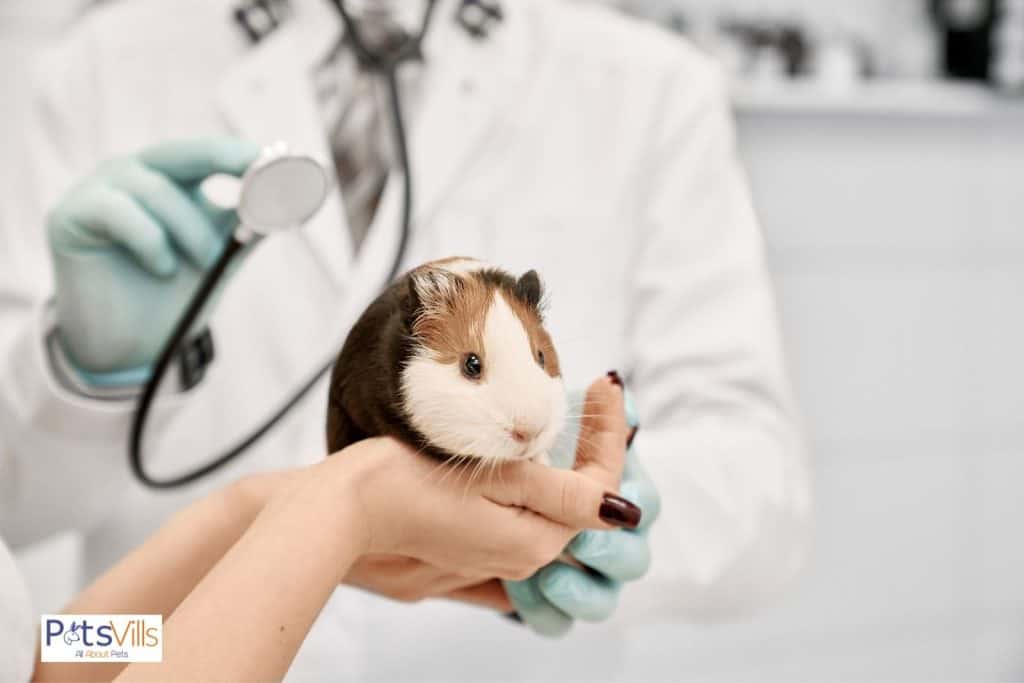
If you notice your hamster is bleeding heavily from their private area, then you should take her to the vet for examination as she could have internal bleeding. Internal bleeding is serious and needs to be treated straight away.
White discharge from your hamster’s private area is normal during estrus. If you plan to breed your hamster, then you should expect to see her produce a white, gluey discharge around 5 days after mating.
In roughly 10 days after mating, you will see your hamster’s stomach begin to swell and grow larger. 15 to 22 days after mating is when her pups (baby hamsters) will arrive.
A bloody discharge prior to delivery of your hamster’s pups is normal.
Hamster Breeding
If you are planning on or looking into breeding your hamster, then you need to do your research beforehand.
Hamster breeding is complicated and can go extremely badly if you are unprepared and not sure what you are doing.
Not only do you need to understand the genetics of your hamsters to ensure the pups do have any neurological issues or health problems, but you also need to have the funds, space, and time, especially if something goes wrong,
Female hamsters can abandon their babies, which means you would need to care for a lot of pups. Hamsters usually have litters of 6 and 12, but they can have larger ones.
Caring for baby hamsters without their mother is difficult and time-consuming.
Female hamsters can also hurt or kill their babies if they are disturbed or stressed out. You should never bother a female hamster when she is caring for pups, and you never handle her babies.
If you handle a mother hamster’s pups, then you transfer your scent onto them. This can result in the mother not recognizing her young as they don’t smell like her.
Mother hamsters can abandon or hurt their pups if they don’t smell like her. Using gloves is the safest method when giving a female hamster with pups water, food, or her cage a clean.
Additionally, when the pups are old enough, you need to have enough cages to separate them.
Not only do hamsters sexually mature very young (which could mean you need up with even more hamsters, but Syrian hamsters become aggressive towards one another at around 6 weeks old.
You need to make sure you have space and money to be able to look after all these hamsters, as well as find homes for them afterward.
It is important to know that you may be left with a lot more hamsters than you wanted if you are unable to rehome the pups.
Baby hamsters are adorable, but they quickly grow and will need a good-sized cage, toys, food, and bedding. This can be very expensive if you can’t rehome the pups.
Breeding your hamster is a decision that needs a lot of consideration. It is not recommended for beginners or owners who have not had hamsters for a long time.
Only hamster owners who have a lot of experience should attempt breeding their hamsters. It requires a lot of knowledge, preparation, and research.
Check the video below for more tips:
When is Discharge or Blood Not Part of the Estrus Cycle?
It is important to know when discharge or blood from your hamster’s private area is not normal or part of her estrus cycle. Here are a few conditions that might cause abnormal discharge or bleeding in your hamster.
Internal Bleeding
Excessive bleeding from your hamster’s private area could signal internal bleeding.
Internal bleeding could be due to an illness or disease, or from a nasty fall, your hamster encountered in her cage. There are also antibiotics that could make your hamster bleed internally.
Pyometra
A condition call pyometra can cause foul-smelling and yellow discharge to leak from your hamster’s private areas. This discharge is pus due to a uterine infection.
If you notice your hamster is more sluggish and inactive than usual, then this could also be a sign of pyometra.
Additionally, hamsters with pyometra can also have a large, bloated belly. If you know your hamster is definitely not pregnant, then she may have pyometra or another illness that causes a swollen belly.
You should take your hamster to your vet so they can examine her further.
Wet Tail
Wetness surrounding your hamster’s bottom, near her tail, could be the wet tail. Wet tail is common in young hamsters who are under 12 weeks old. Syrian hamsters are more prone to the disease.
A wet tail is typically caused by stress, like moving to a new house, living in a noisy setting, or being attacked by another animal or hamster.
If you have recently brought your hamster home, then you should let her settle in for a few days first before you attempt handling or interacting with her.
You should also make sure your hamster lives in a quiet room and cannot be accessed by other animals.
If you own a pair or group of dwarf hamsters, then always check they are getting along with one another. If you notice any conflict or tension between the two hamsters, you should separate them immediately.
Make sure you have a spare hamster cage you can use in these situations.
A wet tail can also be caused by bacterial growth in your hamster’s stomach, unsanitary living conditions, and some types of antibiotics (but this is rare).
This is why it’s important you regularly and thoroughly clean your hamster’s habitat once a week or fortnight.
The wet tail’s primary symptom is diarrhea or loose stools, but the wetness around a hamster’s tail can be mistaken for discharge.
If you notice any of these signs or suspect your hamster has a wet tail, then you should take her to a vet immediately.
A wet tail is serious and can be fatal if left untreated. Hamsters who do not receive treatment for wet tails can pass away within one week, which is why you need to act fast.
Does Hamster’s Estrus Cycle Create a Mess?
A hamster during its estrus cycle can produce thick discharge, but it doesn’t usually create a large enough mess that requires its cage to be cleaned.
Although they don’t require to be cleaned, they may smell slightly than usual and produce thick discharge with a small chance of blood during the end of the cycle.
As an estrus cycle lasts 12 hours and happens overnight, the chance of you noticing is quite slim unless you’re looking out for it.
You should be spot cleaning your hamster’s cage regularly and deep cleaning their cage when it starts to get noticeably dirty.
Cleaning your hamster’s cage out too often can result in unnecessary stress and anxiety for your hamster.
When you clean their cage, it introduces new smells and scents that the hamster may be unfamiliar with, especially if you’re cleaning their cage with cleaning products. Plus, you are completely rearranging their cage.
We have a very useful article that covers how you can clean your hamster’s cage so that they don’t get too stressed out.
How often you need to deep clean their cage will depend on how quickly their cage gets dirty, the number of hamsters you own, and the size of the hamster’s cage.
Depending on what type of cage you have will also depend on how often they need cleaning. For example, glass aquariums may need to be cleaned more often than regular cages with cars.
Once you’ve cleaned their cage put your hamster back and give them some time to adjust to the new smells and scents.
When Are Female Hamsters Sexually Mature?
Female hamsters become sexually mature very young, usually between 4 to 6 weeks old. Around 6 to 8 weeks old is usually when female hamsters experience their first heat.
When female hamsters have their first heat, they can get pregnant if they mate with a male.
Male hamsters mature sexually a bit later than females. Around 10 to 14 weeks of age is average.
FAQs
At what age do female hamsters have periods?
Hamsters will start to begin the estrus cycle (‘go into heat’) when they are 8 to 10 weeks of age.
Do female hamsters smell when in heat?

Yes, your hamster will smell but it isn’t that bad. Sometimes it is noticeable while other times it’s not.
How do you know when a female hamster is in heat?
It is hard to tell when they are in heat. Sometimes there will be a musky smell or they may produce some noticeable discharge.


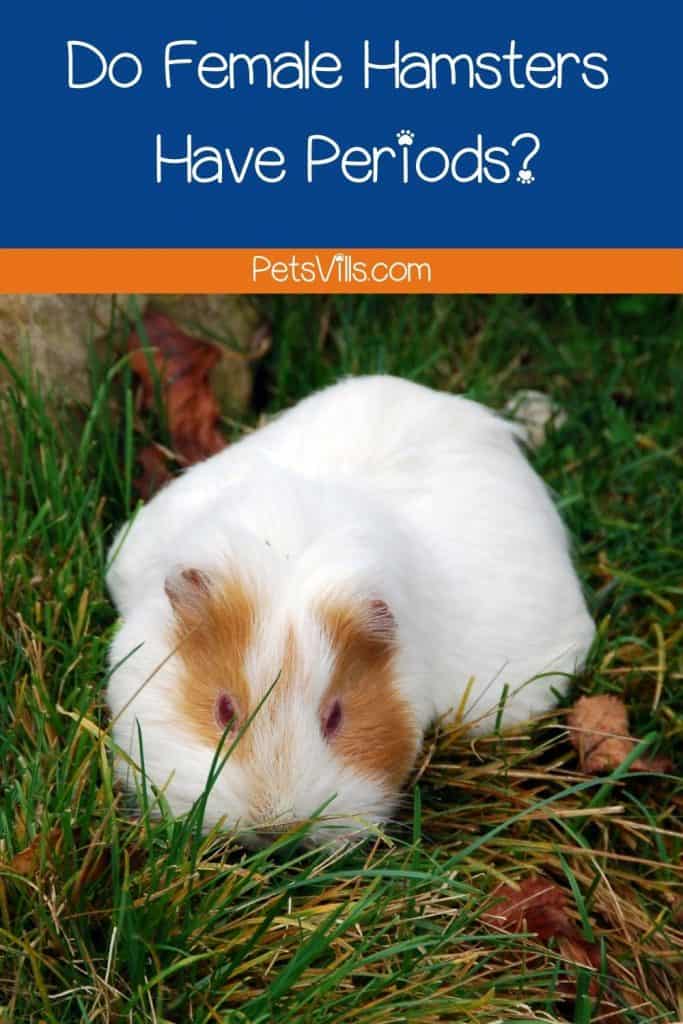
Do female hamsters have periods? Please share your thoughts on this topic below!
Alina Hartley is a small-town girl with a ginormous love of bearded dragons. It all started with Winchester, a baby bearded who was abandoned at the shelter by his former owners because of a birth defect that caused one front leg to be shorter than the other. Alina originally went to the shelter looking for a guinea pig, but one look at Winchester and it was love at first sight. From that day on, Alina has dedicated her life to learning everything she can about bearded dragons. She loves helping new beardie parents start their incredible journey with these magnificent reptiles.
Follow her on:
LINKEDIN
TWITTER.
Read her latest articles HERE
Learn more about her HERE.

